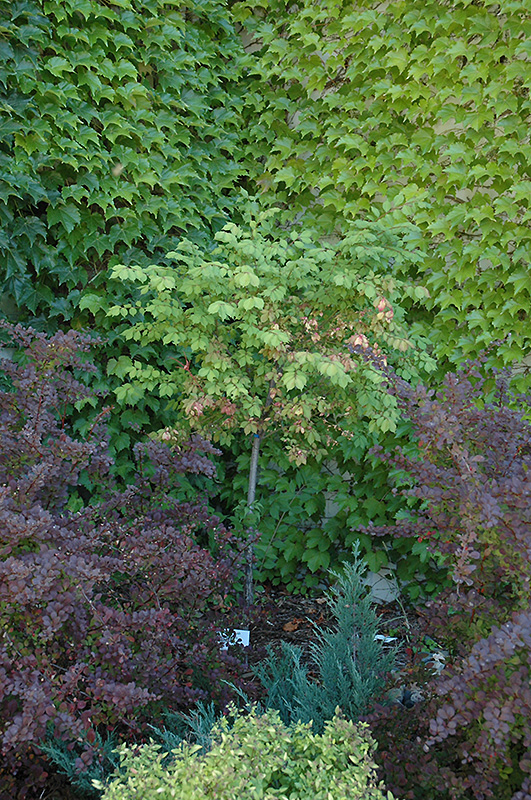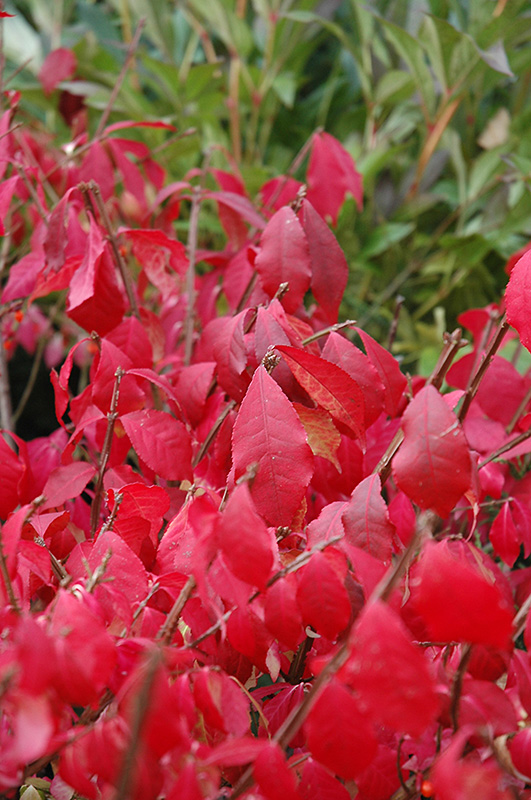Burning Bush, Compact (tree form) Euonymus alatus '(tree form)' Height: 8 feet Spread: 5 feet
Sunlight:
Hardiness Zone: 4a Other Names: Tree-Form Winged Burningbush Description: A grafted patio tree with stunning fall color of florescent red to pink, very showy; forms a rounded ball atop a single standard, interesting corky wings on the branches; very adaptable and versatile; makes a wonderful accent in the garden Ornamental Features Burning Bush, Compact (tree form) is primarily valued in the landscape or garden for its highly ornamental lollipop-like shape. It has rich green deciduous foliage. The pointy leaves turn an outstanding cherry red in the fall. It produces red capsules from early to late fall. The warty brown bark and harvest gold branches are extremely showy and add significant winter interest. Landscape Attributes Burning Bush, Compact (tree form) is a deciduous tree, selected and trained to grow in a small tree-like form with the primary plant grafted high atop a standard. Its average texture blends into the landscape, but can be balanced by one or two finer or coarser trees or shrubs for an effective composition. This is a relatively low maintenance tree, and can be pruned at anytime. It is a good choice for attracting birds to your yard. It has no significant negative characteristics. Burning Bush, Compact (tree form) is recommended for the following landscape applications; Planting & Growing Burning Bush, Compact (tree form) will grow to be about 8 feet tall at maturity, with a spread of 5 feet. It tends to be a little leggy, with a typical clearance of 3 feet from the ground, and is suitable for planting under power lines. It grows at a slow rate, and under ideal conditions can be expected to live for 40 years or more. This tree does best in full sun to partial shade. It prefers to grow in average to moist conditions, and shouldn't be allowed to dry out. This plant should be periodically fertilized throughout the active growing season with a specially-formulated acidic fertilizer. It is not particular as to soil type or pH. It is highly tolerant of urban pollution and will even thrive in inner city environments. This is a selected variety of a species not originally from North America.![]()
![]()
![]()
![]()
![]()
![]()
![]()
![]()
![]()
![]()
![]()
![]()
![]()
![]()
![]()


